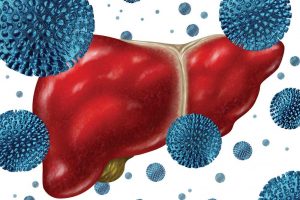Only in the 19th century did scientists establish that hepatitis is a whole group of diseases. And besides the relatively mild hepatitis A, for which there is a vaccine, there are blood-borne hepatitis B, C and others, which have already infected up to 1/3 of humanity. However, there is no vaccine for hepatitis C.
A person receives these infections either when the skin is damaged, or by contacting the blood or mucous membranes of a sick person. But in 30% of cases infected with hepatitis B and C, there is no jaundice, and the state of health is normal. And only after years the virus “wakes up” and causes chronic forms of liver damage, which then transform into cirrhosis and carcinoma that are difficult to treat.
“Everyone is used to the fact that acute infectious diseases are accompanied by obvious symptoms, such as fever and general malaise,” Vadim Pokrovsky, head of the Federal Scientific and Methodological Center for the Prevention and Control of AIDS, said the other day at a meeting with the media dedicated to the International Hepatitis Day. .— For example, influenza is characterized by the spread of the virus to as many people as possible. If one person gets infected, then the whole family gets sick. And hepatitis B lives in the body for many years and does not manifest itself in any way. Only after 20-30 years can it cause cirrhosis of the liver. Hepatitis B and C are highly contagious, 100 times more contagious than HIV https://en.wikipedia.org/wiki/HIV, and one sexual contact with a carrier or one injection with a dirty instrument can be enough to infect. That is why in the Russian Federation, shaving is now prohibited in hairdressing salons, disinfection in these salons is a big fiction. Now it is already clear that a newborn child can become infected with hepatitis B and C from an infected mother.”
as fever and general malaise,” Vadim Pokrovsky, head of the Federal Scientific and Methodological Center for the Prevention and Control of AIDS, said the other day at a meeting with the media dedicated to the International Hepatitis Day. .— For example, influenza is characterized by the spread of the virus to as many people as possible. If one person gets infected, then the whole family gets sick. And hepatitis B lives in the body for many years and does not manifest itself in any way. Only after 20-30 years can it cause cirrhosis of the liver. Hepatitis B and C are highly contagious, 100 times more contagious than HIV https://en.wikipedia.org/wiki/HIV, and one sexual contact with a carrier or one injection with a dirty instrument can be enough to infect. That is why in the Russian Federation, shaving is now prohibited in hairdressing salons, disinfection in these salons is a big fiction. Now it is already clear that a newborn child can become infected with hepatitis B and C from an infected mother.”